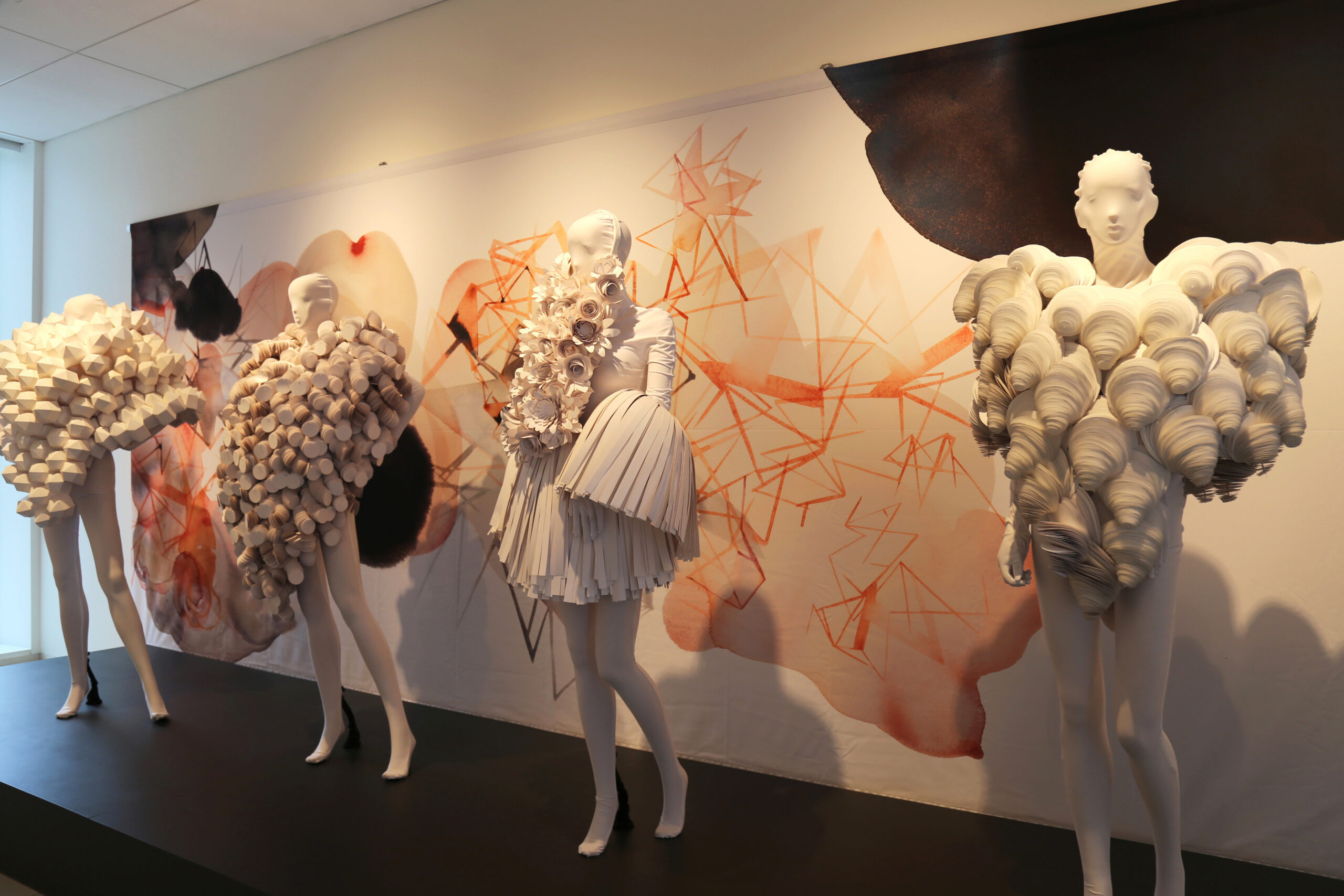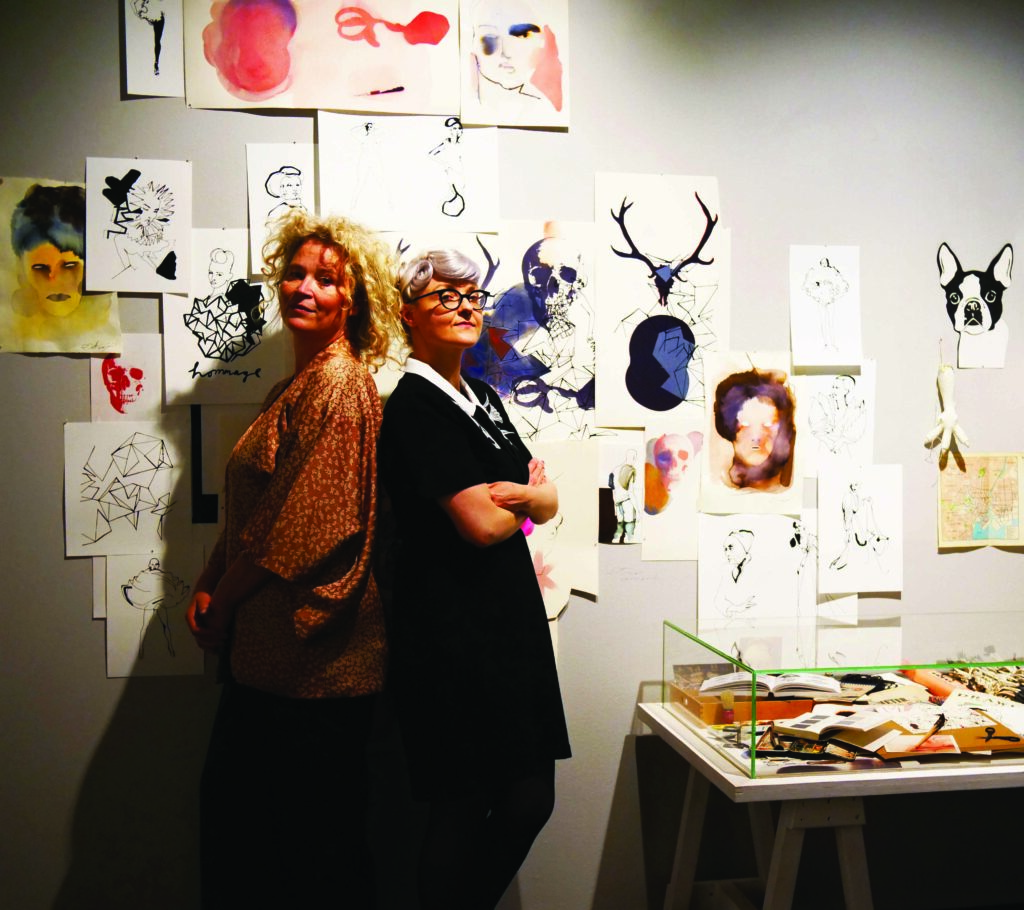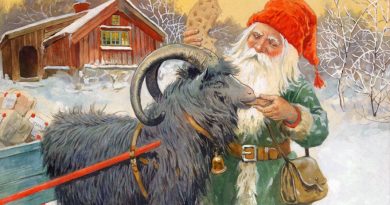A Match Made in Paper – The Creative Partnership of Bea Szenfeld and Stina Wirsén
In a juncture between art and fashion, two renowned Swedish artists meet in a mutual affection for the handmade and the common material of paper.
Designer-artisan Bea Szenfeld and illustrator-author Stina Wirsén have forged a striking creative partnership showcased in Papier, a touring exhibition so far encompassing Sweden and the U.S. The intense collaboration pairs Wirsén’s evocative illustrations with Szenfeld’s “paper coûture” — dresses and other sculptural fashion items made by hand entirely from paper and worn by the likes of Lady Gaga, Björk and Swedish pop star Laleh. Papier features a dozen of Szenfeld’s wearable pieces plus a piece titled “Grief.”
Papier was originally shown at Lidköping Konsthall (Art Gallery) in Sweden, and later opened at the Embassy’s House of Sweden in Washington D.C., right as the COVID pandemic hit in early March 2020. A collaboration with the Embassy enabled the American Swedish Institute in Minneapolis, Minnesota, to launch a Midwest début running February – July 11, 2021.
The two artists have collaborated for more than 20 years, supporting each other’s creative visions. They first met when Wirsén was an illustrator for Dagens Nyheter, Sweden’s biggest daily newspaper, and she covered Szenfeld’s first fashion show. “I found her work very interesting from the start,” said Wirsén. The feeling was mutual.
In her Stockholm studio, Bea Szenfeld painstakingly cuts, folds, sews and staples thousands of pieces of paper into intricate, 3-dimensional garments and objects. It is a time-consuming endeavor. The bold designs belie their delicateness. On the other side of town, Stina Wirsén puts ink to paper, capturing life, movement and beauty. Many hours are spent using their hands to make, think and experiment – a process they love and share.
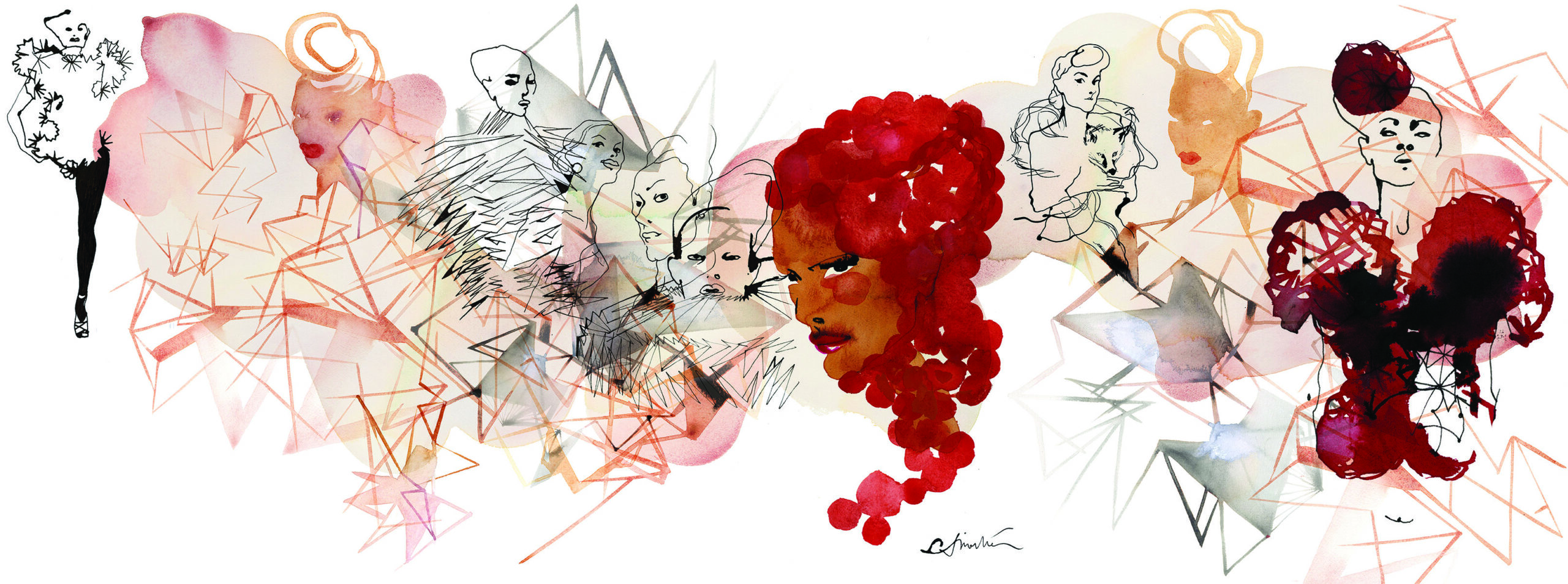
Szenfeld continuously pushes the conventions of paper and fashion. Early inspiration came from origami and Arte Povera, a 1960s-70s Italian art movement that explored unconventional methods and unusual materials, including pasta and lettuce. But she was always drawn to paper and her mother was a tailor, and so paper coûture was a natural.
“There’s something about paper that I just love,” she explained. “It’s unpretentious and folksy. We go great together … I have tested different materials, and with paper the tests were so great right away. In Sweden, we also have many forests and are very good at making beautiful paper!” The paper she uses comes from Sweden’s Lessebo paper mill. Her work with recycled paper also reflects her concern with sustainability in fashion.
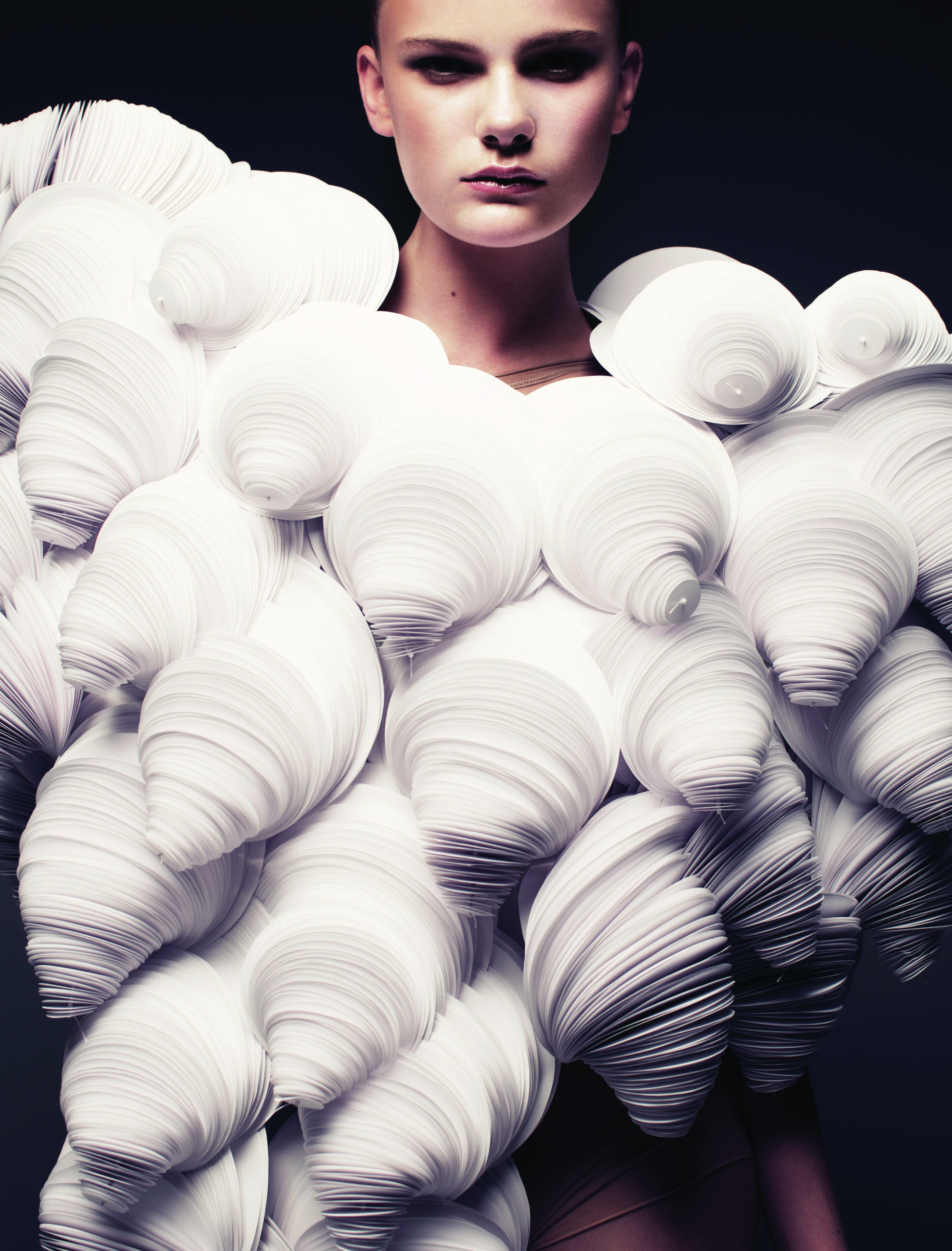
Garments have been inspired by the human form, folklore, crafts or fairy tales as recurring themes. No two are the same and they change with time, wear and the environment. With billowing tops of petalled flowers, cubes and scale-like discs, the creations have been worn in music videos, appeared on magazine covers and at the Nobel Awards. It’s been said that Szenfeld’s “awe-inspiring and technically advanced garments are nearly impossible to wear but beautiful enough to make people try.”
Wirsén says that her journalist background is an asset. “No doubt my two decades as an illustrator for Sweden’s largest morning paper has shaped me. Drawing political subjects and author’s portraits, capturing fashion and nightlife on the fly, has been my university … I maintain a vivid interest in contemporary cultural currents.”
Her visual world is vast and varied; simple and expressive in its elegance. Wirsén’s watercolors in the Papier gallery space — primarily in black, white and shades of red and blue — appear abstract, but are derived from representations of the female body.
Yet, regardless of the venue, her process is the same. In addition to working for theatre, department stores, broadcast and magazines, she is well known for her popular Brokiga, Rut och Knut and Vem children’s books. “Whether it’s a children’s book, an art exhibition or a fashion illustration, I work hard and I work a lot. I don’t do sketches; I just go right on the paper.”
Wirsén’s work for children continues to influence her. “For as long as I remember, I have been drawing and making up stories. My sister and I loved it when our mother read to us, and in turn we loved to read … I believe my stories have been greatly influenced by my own childhood. But I also have the ambition to bring our own age, the ever-present Now, into my work.”
Undoubtedly, the worldwide pandemic has impacted both of their work as artists, yet they make the best of it. Because of travel limitations, the latest exhibition was installed with their input delivered via a Zoom call. Wirsén commented, “I have more time in my studio. That is positive. But I worry a lot, that is negative.” Szenfeld said, “I work a lot on my own in my studio, so a social quarantine is not odd for me. I hope that everything turns around soon and that culture can flourish and enrich our lives.”
By Karen R. Nelson
